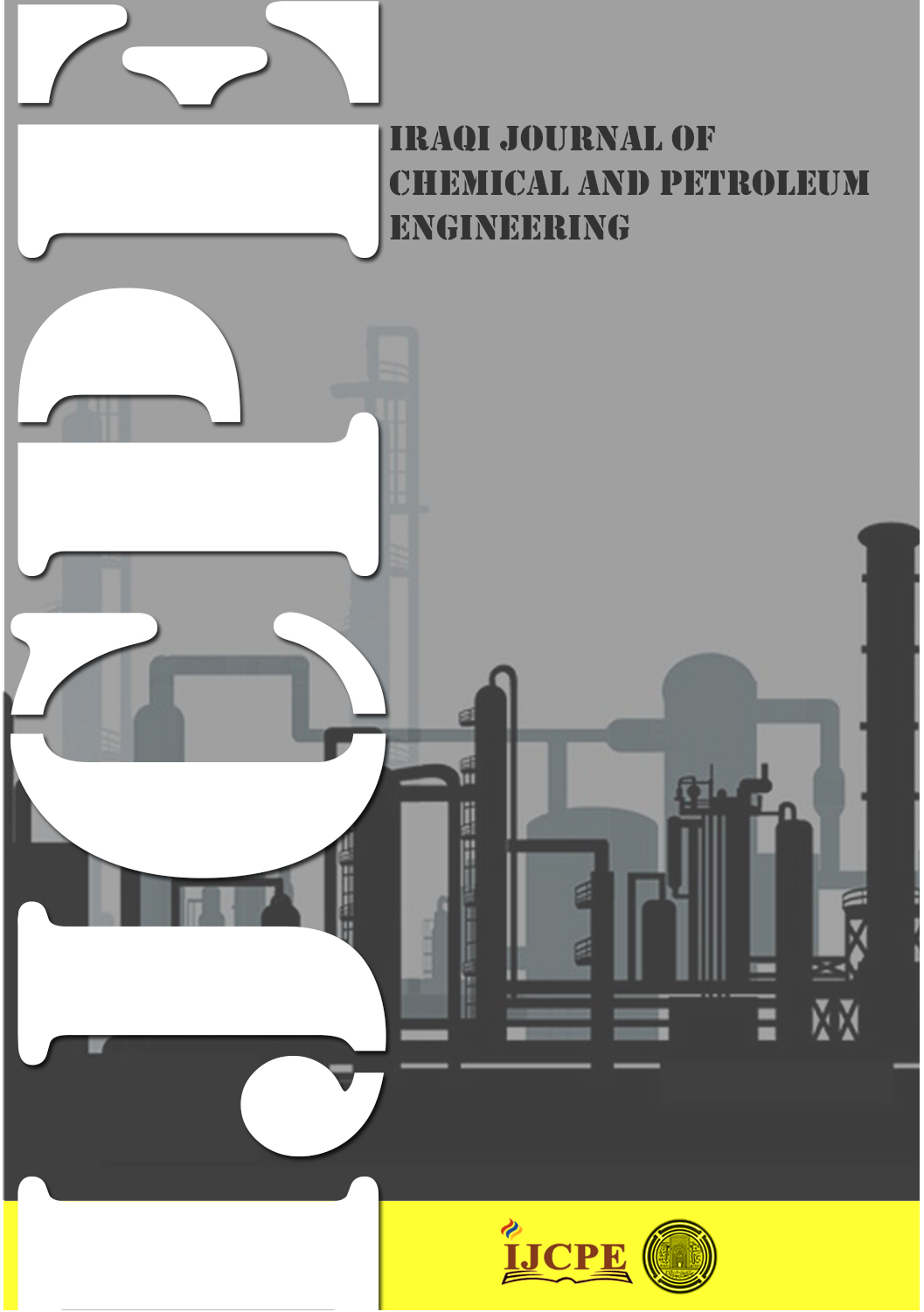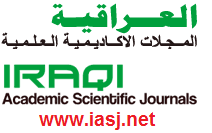An experimental study to evaluate the use of oil to prevent differential stuck pipe in Nahr Umr oil field
DOI:
https://doi.org/10.31699/IJCPE.2025.1.14Keywords:
Bentonite; Friction coefficient; Filtration Loss; Differential stuck pipeAbstract
Differential pipe sticking (DSP) is a main challenge when using water-based drilling fluids developed with bentonite clay. This study employed a Fann VG meter, a self-fabricated tester, and a stickance tester to examine the effect of oil on water-based drilling mud (WBM) and to control this issue. The study found that oil is more suitable than WBM for the composition of drilling fluids. Empirical investigations showed that adding oil to the drilling fluid maintained its rheological characteristics, reduced filtration loss from 19 to 8 cc, and decreased the friction coefficient from 0.32 to 0.05. The tendency of the drilling fluid to stick was also significantly diminished, indicating its effectiveness in preventing differential stuck pipe issues associated with water-based drilling mud. Additionally, it was observed that oil should be used in high-permeable zones rather than WBM. The Nahr Umr oil field was selected to study the problem of differential stuck using a simple well site test for monitoring and optimizing drilling fluid properties. The study concluded that using emulsion mud as a drilling fluid can prevent and treat differential stuck pipe without any torque, due to its ability to reduce the friction coefficient to less than 0.05. However, it is essential to ensure that the oil percentage does not exceed 3% to avoid any change in the rheological properties.
Received on 29/12/2022
Received in Revised Form on 27/02/2023
Accepted on 27/02/2023
Published on 30/03/2025
References
[1] F. E. Dupriest, W. C. Elks and S. Ottesen. “Design Methodology and Operational Practices Eliminate Differential Sticking.” SPE Drilling & Completion. 2011. https://doi.org/10.2118/128129-PA
[2] A. H. Assi and H. Ahmed. “Enhancing the rheological properties of water-base drilling fluid by utilizing of environmentally-friendly materials.”Journal of petroleum research and studies, vol.32,pp.66-81. 2021. http://doi.org/10.52716/jprs.v11i3.533
[3] S.I Jardine, D.P. McCann and S.S. Barber. “An Advanced System for the Early Detection of Sticking Pipe.” IADC/SPE Drilling Conference, New Orleans, Louisiana, USA, 1992. https://doi.org/10.2118/23915-MS
[4] W. B. Bradly, D. Jarman, R. S. Plott, R. D. Wood, T. R. Schofield, R. A. Auflick and D. Cocking. “A task force approach to reduce stuck pipe costs.” SPE/IADC Drilling conference, Amsterdam, Netherlands, 1991. https://doi.org/10.2118/21999-MS
[5] D. Knox and P. Jiang. “ Drilling further with water based fluids-selecting the right lubricants”, SPE 92002, SPE International Symposium on Oilfield Chemistry, The Woodlands, Texas, February 2–4. 2005. https://doi.org/10.2118/92002-MS
[6] J. D. Kercheville, A. A. Hinds and W. R. Clements. “Comparison of Environmentally Acceptable Materials with Diesel Oil for Drilling Mud Lubricity and Spotting Fluid Formulations.” SPE/IADC Drilling Conference, Dallas, Texas, USA, 1986. https://doi.org/10.2118/14797-MS
[7] W.S. Halliday and D.K. Clapper. “Toxicity and Performance Testing of Non-Oil Spotting Fluid for Differentially Stuck Pipe.” SPE/IADC Drilling Conference, New Orleans, Louisiana, USA, 1989. https://doi.org/10.2118/18684-MS
[8] P.I. Reid., G.H. Meeten., P.W. Way., P. Clark., B.D. Chambers., and A. Gilmour. “Mechanisms of Differential Sticking and a Simple Well Site Test for Monitoring and Optimizing Drilling Mud Properties” IADC/SPE Drilling Conference, New Orleans, Louisiana, 12–15 March. 1996. https://doi.org/10.2118/35100-MS
[9] N. S. Amin and A. A. Alrazzaq. “Analysis of stuck pipe incidents in khabaz field,” Iraqi Journal of Chemical and Petroleum Engineering, vol.19, pp. 47–53. 2018. https://doi.org/10.31699/IJCPE.2018.4.6
[10] F. Al-Mahdawi and K. Saad. “Enhancement of Drilling Fluid Properties Using Nanoparticles.” Iraqi Journal of Chemical and Petroleum Engineering, vol.19, pp, 6- 21. 2018. https://doi.org/10.31699/IJCPE.2018.2.4
[11] A. H. Assi and A. A. Haiwai. “Enhancing the rheological properties of water-base drilling fluid by utilizing of environmentally-friendly materials.” Journal of petroleum research and studies, vol.32, pp.66-81, 2021. http://doi.org/10.52716/jprs.v11i3.533
[12] F. Hameed. and A. A. Alrazzaq. “Formulating Inhibited Fluids for Stable Drilling Operations into Tanuma and Zubair Shales, Zubair Oilfield, Southern Iraq” Iraqi Geological Journal, 55, 108–119. 2022. https://doi.org/10.46717/igj.55.2D.9ms-2022-10-25
[13] K. T. Alhisnawy and A. A. Alrazzaq . “ Using of Unconventional Method Depending on Well Power in Mishrif Formation to Release Differential Stuck Pipe, Nahr Umr Oil Field, Southern Iraq.” Iraq Geological Journal, vol.56, No.2B, pp. 67-74, 2023. https://doi.org/10.46717/Igj.56.2B.5ms-2023-8-14
[14] D. A. Krol. “Additives cuts differential pressure sticking of drill pipe” Oil Gas Journal. 82:55–59. 1984.
[15] K. T. Alhisnawy, A. A. Alrazzaq and W. M. Emtair. “A descriptive study of differential stuck pipe problem in Nahr Umr oil field: principles and treatments Iraqi Journal of Chemical and Petroleum Engineering, vol.25, pp. 105-114, 2024. https://doi.org/10.31699/IJCPE.2024.3.12
[16] F. Hameed and A. A. Alrazzaq. “Laboratory Testing and Evaluation of Shale Interaction with Mud for Tanuma Shale Formation in Southern Iraq.” Iraqi Journal of Chemical and Petroleum Engineering, vol.23, pp. 35–41, 2022. https://doi.org/10.31699/IJCPE.2022.3.5
Downloads
Published
Issue
Section
License
Copyright (c) 2025 The Author(s). Published by College of Engineering, University of Baghdad.

This work is licensed under a Creative Commons Attribution 4.0 International License.













